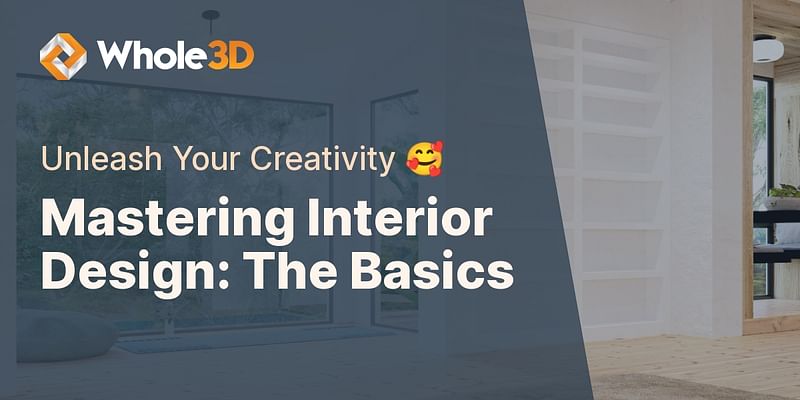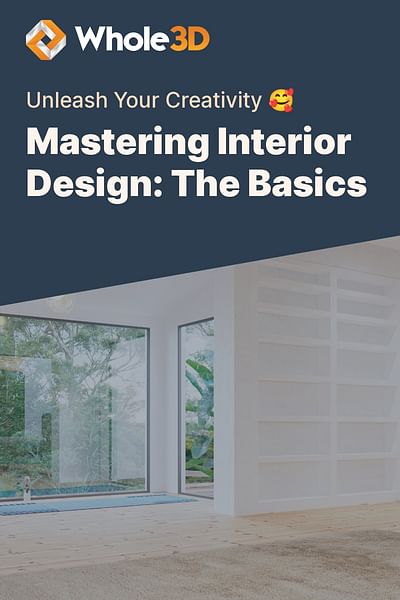Anika Luettgen is a proficient artist and 3D wall panel designer, known for her knack of crafting unique and visually compelling spaces. Anika has been an integral part of the Whole 3D team for more than 7 years, partnering with clients to turn their design dreams into reality.
When it comes to interior designing, there are a few key principles and concepts that can help you create a beautiful and functional space. Whether you're starting from scratch or looking to refresh your current decor, understanding these basics will set you on the right path to achieving your desired aesthetic. Here are some fundamental elements to consider:
1. Color: Color plays a crucial role in setting the mood and atmosphere of a room. Choose a color scheme that reflects your personal style and complements the function of the space. Warm colors like reds and yellows create a cozy and inviting feel, while cool colors like blues and greens promote a calm and serene ambiance. Experiment with different shades and combinations to find what works best for you.
2. Lighting: Proper lighting can transform the look and feel of a room. Natural light is always a great option, so make sure to maximize it by using sheer curtains or blinds that allow sunlight to filter through. Additionally, incorporate a mix of ambient, task, and accent lighting to create layers of illumination. This will not only enhance the functionality of the space but also add depth and visual interest.
3. Layout: The layout of a room is crucial for its functionality and flow. Consider the purpose of the space and arrange furniture and decor in a way that promotes easy movement and accessibility. Create distinct zones for different activities, such as a cozy reading nook or a dedicated workspace. Experiment with different furniture arrangements until you find the one that works best for your needs.
4. Texture: Texture adds depth and visual interest to a room. Incorporate a variety of textures through textiles, furniture, and decor. Mix smooth and rough surfaces, soft and hard materials, to create a balanced and visually appealing space. For example, pair a plush velvet sofa with a rustic wooden coffee table for an interesting contrast.
5. Balance: Achieving balance in a room is essential for creating a harmonious and visually pleasing environment. There are two types of balance to consider: symmetrical and asymmetrical. Symmetrical balance involves placing identical or similar objects on either side of a central point, creating a sense of order and formality. Asymmetrical balance, on the other hand, involves arranging objects of different sizes and shapes in a way that creates visual equilibrium. Experiment with both types of balance to find the one that resonates with your style.
6. Personalization: Lastly, don't forget to infuse your personality into the space. Add personal touches through artwork, photographs, and sentimental objects. These personal elements will make the space feel uniquely yours and create a sense of warmth and comfort.
Remember, interior designing is a creative process, and there are no strict rules. Use these basics as a starting point and let your imagination guide you. Play with different ideas, experiment with colors and patterns, and most importantly, have fun with the process. Happy designing!














